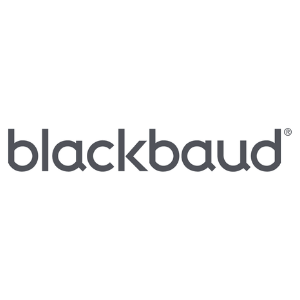Insights
INSIGHTS
All Topics
How different generations give to charity
28 Nov 2024by Laura Stanley
We explore donor behaviour by different age groups, from Gen Z to the Boomer generation, with insight from a new report by Blackbaud
Understanding donor behaviour is one of the central pillars of fundraising. Knowing what motivates donors to support their chosen charity, how they prefer to be contacted, and their preferred payment methods can vastly boost fundraising efforts. This knowledge allows charities to tailor their campaigns accordingly to the needs of their existing supporters and adapt so they can attract new ones.
It has become especially important to understand donor motivations in an increasingly online world, where we are used to shopping, socialising, and accessing vital services seamlessly. At its simplest, the easier charities make it for their supporters to donate, the more funds they are able to raise – and the chance of them returning to donate in future grows too.
Charity donors are no monolith. Whether they are regular givers, vocal advocates, or one-time donors, for charities, the goal is to understand their behaviours and motivations to ensure they are reaching the right people at the right time in the right way to supercharge their fundraising.
One key factor that charities should consider is age group – how do different generations give to charity? A new report, Charitable Support Across Generations in the UK and Ireland, from charity software partner Blackbaud, delves into just that. The report reveals key differences in donor behaviour, with the aim of helping fundraisers identify how to engage and connect with supporters of all ages.
“Each generation brings unique perspectives and values to the table,” explains the report. “By recognising and embracing these generational differences, nonprofit organisations can inspire new supporters to join their causes and strengthen the bonds with those who already support them.”
Below, we explore some of the key findings from the report and what they mean for charities heading into 2025.
Donor behaviour
The report splits each charity supporter into four categories: donors, volunteers, promoters, and advocates.
Donors give funds or goods to causes or individuals. Volunteers dedicate time, promoters spread the word, and advocates actively influence or rally for causes or policies. The good news for charities is that engagement levels are high across all generations, but the method of support tends to differ slightly.
For example, while there are similar donation levels across all age groups, the levels of volunteering is higher among millennials and Gen Z supporters. In fact, while Gen Z had the lowest percentage of donors (68%), half of Gen Z respondents identified themselves as volunteers, with 52% of millennials saying the same. In comparison, only around a quarter of boomers identified as volunteers, as did 31% of Gen X supporters.
Indeed, while the generations agreed that donating was the best way to make a difference on the issues and causes that are important to them, there were more pronounced differences evident elsewhere.
While more than a quarter of Gen Z respondents said donating money was the best way to make a difference to a cause, a similar proportion (22%) said the same about volunteering – double the amount of boomer respondents.
Participating in advocacy actions was the third most cited way of making a difference for Gen Z, for example signing petitions and writing letters. And while Boomers may have disagreed on the volunteering front, advocacy was the third most important way of supporting a charity to them too, following donating and spreading the word to others.
Interestingly, advocacy levels were largely the same across all generations, though they differed on how important they considered it. The report showed that that younger age groups were more likely to fall into the promoter category – spreading the word about their causes – but Boomer respondents considered it more impactful than any other age group when asked what difference it made.
Donor motivation
The report also looks into what types of charity each generation chooses to support – with health charities, children’s charities, and animal protection organisations performing well with all generations. It also explores the factors that are important to each generation, such as trust, impact, and charitable reputation.
“Impact, reputation, and efficiency are a key research focus regardless of the supporter type,” explains the report. “All supporter types are also most likely to explore the organisation’s website before choosing to support the cause. Promoters conduct social media research more actively than donors, volunteers or advocates, and together with advocates, they are more likely to rely on information in the news.”
The report demonstrates the importance of segmentation and accessing the bigger picture of your supporters. The appetite for volunteering may be highest among Gen Z supporters – meaning that the chances of recruitment success may be higher with that age group. However, it’s clear that Boomers put a lot of stock in advocacy actions and spreading the word, even if they do not currently consider themselves promoters – perhaps there is an opportunity for charities to reach this generation and make it easier for them to share information about your cause.
To find out more about how different generations prefer to support charities – and to read Blackbaud’s recommendations for boosting your fundraising as a result – you can download the full report below.
Laura Stanley
More on this topic
Recommended Products
Recommended Products
15 Jan 2025by Laura Stanley
How to revisit your charity’s story in 2025Sponsored Article
15 Jan 2025by kirsty marrins
AI and the future of service delivery
14 Jan 2025by Christine Chiu
A simple guide to social banners and imagesSponsored Article
13 Jan 2025by Ioan Marc Jones
An A-Z glossary of service delivery terms and definitions
Our Events
Charity Digital Academy
Our courses aim, in just three hours, to enhance soft skills and hard skills, boost your knowledge of finance and artificial intelligence, and supercharge your digital capabilities. Check out some of the incredible options by clicking here.
















